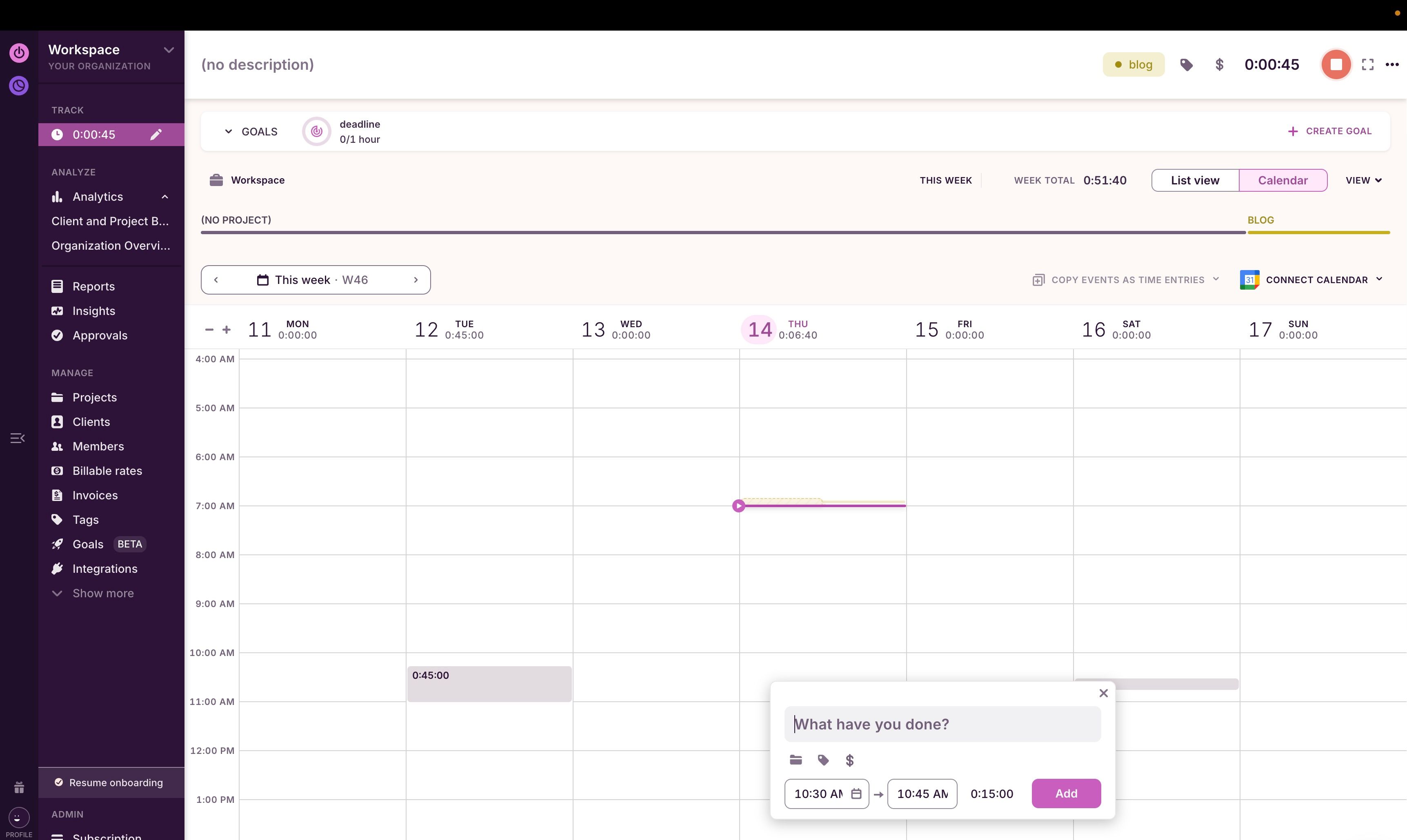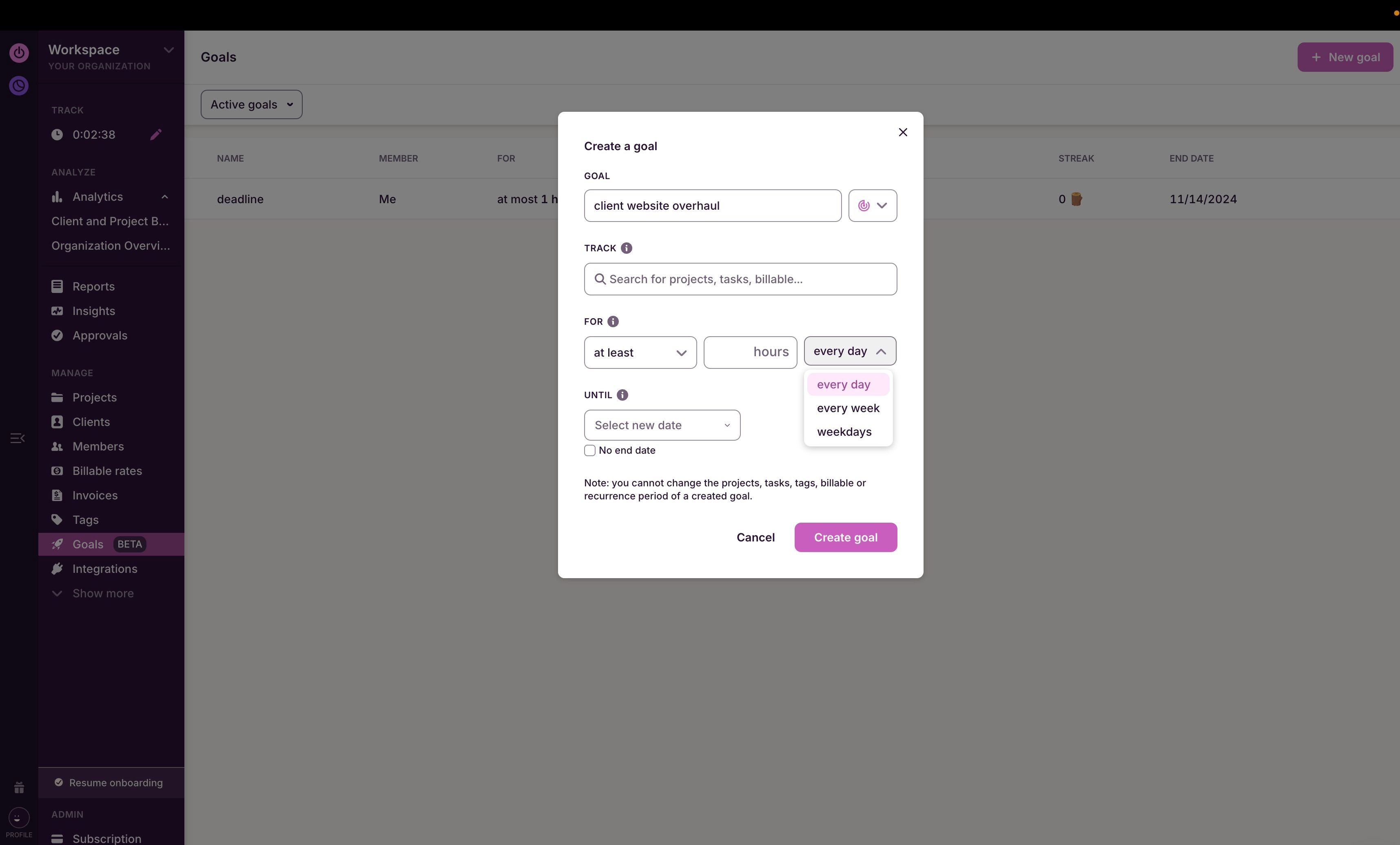Time-tracking apps are often marketed as essential productivity tools that help you make the most of every minute. They promise efficiency, structure, and better time management, making it easy to see why so many people turn to them to optimize their workdays.
However, despite their good intentions, these apps can sometimes have the opposite effect.
1 The Productivity Paradox
Time-tracking apps are meant to help you streamline your workday, but their promise of optimization can turn into a time-sucking loop of endless configuration and maintenance. The very tools designed to help you work smarter can end up consuming more time and attention than they save.
In my experience, Toggl Track and similar time-tracking tools turn out to be less than the productivity solution they’re so often touted to be. What starts as an attempt to optimize your workdays can quickly spiral into a time-sucking vortex of endless configuration and context-switching.
To keep things practical, I’ll use Toggl Track as an example, but these points apply to many time-tracking tools.
2 Setup is a Time Sink
Getting started with time-tracking apps might seem simple, but the initial setup can be deceptively time-consuming.
As I’m sure many fellow Toggl Track users are aware, one of the key features of the app involves remembering to set a timer before starting a typical task during your day, and it’s easy to forget, and even easier (for yours truly, anyway) to remember to stop recording once you switch tasks.
This immediately sets the odds against being able to feel like I’m staying on top of the tasks that Toggl is supposed to help me streamline.
Detailed, manual categorization of tasks and projects in endeavors like this never ends well for me. I can easily lose 20 minutes on one detail within a detail in my innate desire to get it “just right.”
This hurdle is like calling an Uber because I’m running late to the starting line of a car race. Welcome to the paradox of efficiency through tech. Where the irony of spending hours configuring an app designed to save time is subtly glossed over with words like “customizable” or “bespoke”.
Rather than getting mired in the endless optimization of setup, sometimes a simpler, more analog solution can be more effective. Call me old-fashioned, but there’s something admirable about the enduring, tactile simplicity of a paper to-do list or sticky note.
The physical act of crossing off tasks with a pen never fails to satisfy, even in our digital-dominated world. These old-school tools have been around for the better part of a century for good reasons.
3 Compliance Becomes a Chore
Time-tracking apps often require constant compliance, essentially feeding my tasks after midnight and compounding them into an exponentially growing army of gremlins to deal with throughout an already hectic day.
This makes my anxiety kick up and can begin to distract me from the actual work I need to push through. You know, that guilty feeling you get from feeling guilty about feeling guilt for letting an app down…or is that just a “me” thing?
Toggl requires you to constantly be aware of your time, and the pressure to be accurate leads to constant logging and editing in the app. Forgetting to track one task means spending extra time adjusting entries retroactively.
I’ve found myself stressing over whether I logged my time correctly in Toggl, only to realize I wasted more time trying to fix it than it was worth. The mental load of tracking every minute can be counterproductive. In these cases, chipping away at my to-do list, piece by piece, tends to be more efficient than meticulously tracking how long they take.
4 Alerts Can Be Counterproductive
One of the biggest downsides for me when using apps like Toggl Track is the interruptions they cause. For someone who thrives when they can be left to get lost in the act of creating, this is a massive productivity killer.
The constant barrage of notifications and pop-ups from these apps can do more damage than good. Especially for creatives who rely on windows of uninterrupted focus. The need to switch between the app and your task leads to context-switching fatigue, which can significantly impact your productivity.
I’ve also experienced moments where I was in the zone, only to be yanked out by a Toggl notification—completely killing the creative flow I had going, which can be absolutely infuriating.
I’ve come around to batching my work into focused, uninterrupted blocks where I know with pretty fair accuracy that I can enter a state of deep focus without the looming threat of constant distractions.
In the end, trusting yourself to stay productive may be more effective than constantly monitoring your time with an app like Toggl, but it really boils down to personal preference. While time-tracking apps can undoubtedly be useful for some, they’re not one-size-fits-all. For those of us who get bogged down in details, these tools of convenience can turn you into an exercise in self-sabotage.
I will say that I don’t regret giving time-tracker apps their shot, even if they didn’t suit my approach to productivity. Knowing what you don’t like is an important factor in finding what you do.



